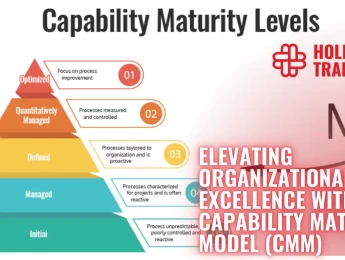Introduction
Navigating the world of construction and engineering projects often involves a labyrinth of contracts, regulations, and standards. FIDIC contracts stand out as a cornerstone in international project management. This blog post delves into the intricate world of FIDIC contracts, shedding light on their significance, types, history, and dispute-resolution mechanisms. By the end of this exploration, readers will gain a thorough understanding of FIDIC contracts and their critical role in facilitating smooth and efficient project execution.
What are FIDIC Contracts?
FIDIC, which stands for the Fédération Internationale des Ingénieurs-Conseils, is an organisation that represents consulting engineers worldwide. FIDIC contracts are standard conditions and frameworks for construction and engineering projects, primarily used in international contracts. These documents provide clear guidelines for the relationship between the parties involved—typically the employer (client) and the contractor—defining their rights, obligations, and liabilities.
FIDIC contracts are designed to streamline project execution and minimise conflicts. They encompass various aspects of project management, including:
- Scope of Work: Clearly outlining the work to be completed helps manage expectations and responsibilities.
- Payment Terms: Establishing the payment schedule and conditions for the contractor, ensuring timely compensation for completed work.
- Timeframes: Setting out the project timeline, including deadlines for completion and provisions for delays.
- Dispute Resolution: Providing mechanisms for resolving conflicts between parties, which is crucial in maintaining project momentum.
Using FIDIC contracts, project stakeholders can achieve a structured approach to project delivery, enhancing accountability and transparency.
The History of FIDIC
The history of FIDIC dates back to 1913, when a group of consulting engineers from different countries met in Paris to discuss common concerns and challenges in the engineering industry. This gathering laid the foundation for FIDIC, which was officially formed in 1957 as an international federation of consulting engineers. Over the years, FIDIC has worked diligently to promote best practices in engineering and construction, advocating for the interests of consulting engineers worldwide.
The first set of FIDIC contract conditions, known as the "Red Book, " was published in 1969. This book quickly gained popularity due to its clear language and well-defined terms, making it a preferred choice for many projects. Since then, FIDIC has continuously updated and expanded its suite of contracts to address evolving industry needs and practices.
Today, FIDIC contracts are recognised globally and are often included as standard forms in tender documents, particularly for projects financed by international organisations such as the World Bank and the Asian Development Bank. The widespread adoption of FIDIC contracts underscores their importance in fostering effective collaboration in complex projects.
What are the Types of FIDIC Contracts?
FIDIC offers a range of contract types tailored to different project scenarios and stakeholder needs. Each type serves a specific purpose and is characterised by its conditions of contract, which outline the roles and responsibilities of the parties involved. The main types of FIDIC contracts include:
1. Red Book (Conditions of Contract for Construction)
The Red Book is one of the most widely used FIDIC contracts and is specifically designed for building and engineering works where the employer provides the design. This contract is especially suitable for traditional procurement methods, where the client retains control over the design process. Key features of the Red Book include:
- Design Responsibility: The employer (client) retains the design responsibility, ensuring that the contractor executes the work according to the specified design.
- Measurement and Valuation: The contract typically employs a measurement-based approach for assessing the completed works, allowing for accurate payment based on actual quantities.
- Progress Payments: The contractor receives payments based on periodic assessments of work completed, which helps maintain cash flow throughout the project.
- Dispute Resolution: The Red Book includes provisions for the establishment of a Dispute Adjudication Board (DAB), allowing for timely resolution of disputes that may arise during construction.
2. Yellow Book (Conditions of Contract for Plant and Design-Build)
The Yellow Book is geared toward projects where the contractor is responsible for both the design and construction of the works. This contract is particularly favoured for infrastructure projects such as highways, bridges, and industrial facilities. Key characteristics include:
- Design-Build Responsibility: The contractor takes full responsibility for designing and executing the works, offering a single point of accountability for project delivery.
- Performance-Based Payment: Payments are often tied to performance milestones, encouraging the contractor to adhere to project schedules and quality standards.
- Flexibility: The Yellow Book allows for greater flexibility in design, as the contractor can adapt the design to meet changing project requirements or conditions.
- Enhanced Risk Allocation: The Yellow Book facilitates more effective risk management for complex projects since the contractor assumes both design and construction risks.
3. Silver Book (Conditions of Contract for EPC/Turnkey Projects)
The Silver Book is tailored for projects delivered on a turnkey basis, where the contractor is responsible for delivering the project in a fully operational state. This contract is commonly used for large-scale projects, particularly in sectors such as energy and infrastructure. Notable aspects include:
- Comprehensive Responsibility: The contractor is responsible for the entire project lifecycle, from design through construction to commissioning, minimising the employer's risk exposure.
- Fixed Price and Time: Typically, the contract specifies a fixed price and a defined completion date, providing clarity and certainty for both parties.
- Performance Guarantees: The contractor may be required to provide performance guarantees or warranties, ensuring that the delivered project meets specified operational criteria.
- Limited Employer Intervention: The employer has limited involvement during the execution phase, allowing the contractor to manage the project autonomously.
FIDIC Contract Type | Description | Common Usage |
Red Book (Construction) | Suitable for building works with design input | Primarily used for traditional construction |
Yellow Book (Design and Build) | For projects where the contractor designs and builds | Common in design-build contracts |
Silver Book (EPC/Turnkey) | Focused on complete contractor responsibility | Ideal for complex engineering projects |
Green Book (Short Form) | Simplified contract for smaller projects | Used for minor works or quick projects |
Gold Book (D&B with Operator) | Combines design, build, and operation roles | Suited for long-term infrastructure projects |
4. Green Book (Conditions of Contract for Short Form of Contract)
The Green Book serves as a simplified contract option for smaller projects or those with straightforward scopes of work. It is particularly useful for projects that do not require the extensive administrative burden of larger contracts. Key features include:
- Simplicity and Clarity: The Green Book is concise and easy to understand, making it accessible for stakeholders with varying levels of contractual expertise.
- Quick Project Delivery: The Green Book's streamlined nature facilitates faster project initiation and completion, ideal for minor works or renovations.
- Less Rigorous Administration: The reduced administrative requirements make it suitable for projects with limited budgets or resources, allowing for efficient contract management.
5. Gold Book (Conditions of Contract for Design-Build and Operation)
The Gold Book is a relatively recent addition to the FIDIC suite, designed for projects that require the contractor to handle design, construction, and subsequent operation. This contract is particularly relevant in public-private partnerships (PPPs) and similar arrangements. Key elements include:
- Lifecycle Responsibility: The contractor is accountable for the project throughout its lifecycle, from design and construction to ongoing operation and maintenance.
- Long-Term Performance Metrics: The contract includes performance criteria that the contractor must meet during the operational phase, incentivizing quality and efficiency.
- Collaborative Approach: The Gold Book encourages stakeholder collaboration, fostering a partnership mentality that aligns interests and promotes successful outcomes.
Each type of FIDIC contract is crafted to suit different project scenarios, ensuring stakeholders can select the most appropriate framework based on their specific needs and circumstances. Understanding the nuances of each contract type enhances the ability to navigate the complexities of construction and engineering projects, fostering successful collaborations and ultimately leading to better project outcomes. By leveraging the right FIDIC contract, stakeholders can establish clear expectations, effectively manage risks, and promote accountability throughout the project lifecycle.
Why is a FIDIC Contract Important?
FIDIC contracts are pivotal in the construction and engineering sectors, providing a standardised framework that enhances project efficiency and minimises disputes. Here are several reasons highlighting the significance of FIDIC contracts:
1. Standardisation
The standardised nature of FIDIC contracts ensures a uniform approach to contractual agreements across various projects and jurisdictions. This consistency reduces ambiguity and misinterpretation, fostering smoother stakeholder interactions and enhancing trust throughout the project lifecycle.
2. Risk Management
FIDIC contracts provide a structured methodology for identifying, allocating, and mitigating risks inherent in construction projects. By clearly defining responsibilities and liabilities, these contracts help stakeholders navigate uncertainties, which is crucial for minimising potential delays and cost overruns.
3. Dispute Resolution
Incorporating robust dispute resolution mechanisms, such as the Dispute Adjudication Board (DAB), FIDIC contracts promote timely and effective resolution of conflicts that may arise during project execution. This proactive approach reduces the likelihood of disputes escalating into costly legal battles, preserving relationships and project timelines.
4. Global Recognition
FIDIC contracts are recognized and respected globally, facilitating international collaboration and investment in construction projects. This global acceptance enhances the credibility of contracts, making it easier for parties from different countries to engage in projects without significant barriers related to contract differences.
5. Flexibility
FIDIC contracts offer a range of options tailored to different project types, allowing stakeholders to choose the contract best suited to their specific needs. This flexibility empowers parties to customise agreements based on project complexity, size, and delivery methods, leading to better alignment of interests.
6. Clarity and Transparency
The clear language and structured format of FIDIC contracts enhance transparency between parties regarding their rights, obligations, and expectations. This clarity fosters a collaborative environment, enabling stakeholders to focus on project execution rather than becoming mired in contractual misunderstandings.
7. Improved Project Outcomes
By providing a comprehensive framework for project management, FIDIC contracts contribute to improved project delivery and quality outcomes. The defined processes and responsibilities help ensure that projects are completed on time, within budget, and to the required standards, benefiting all stakeholders.
The importance of FIDIC contracts lies in their ability to facilitate efficient project execution, manage risks effectively, and promote harmonious relationships among stakeholders. By utilising these contracts, parties can enhance their chances of success, making them an invaluable tool in the complex world of construction and engineering projects.
How to Know Which FIDIC Contract You Need
Choosing the appropriate FIDIC contract is crucial for the success of any construction or engineering project. The selection process requires carefully assessing various factors related to the project scope, stakeholder responsibilities, and the desired outcomes. Here are some key considerations to guide stakeholders in determining which FIDIC contract is best suited for their specific needs:
1. Project Size and Complexity
The size and complexity of the project significantly influence the choice of contract. Larger, more intricate projects often benefit from the comprehensive frameworks of Yellow or Silver Books, which accommodate complex design and execution requirements. Conversely, smaller, straightforward projects might be better suited to the Green Book, which offers a simplified approach to contracting.
2. Design Responsibility
Determining who will assume responsibility for the design is critical in selecting a FIDIC contract. If the employer provides the design, the Red Book would be appropriate. However, the Yellow Book is the more suitable option if the contractor is responsible for both design and construction. Understanding the design responsibilities ensures that all parties know their roles and obligations from the outset.
3. Risk Allocation Preferences
Different FIDIC contracts have varying approaches to risk allocation. For example, the Silver Book places significant risk on the contractor, making it ideal for projects where the client desires a fixed price and minimal involvement during construction. On the other hand, the Red and Yellow Books allow for a more balanced distribution of risks. Stakeholders should evaluate their risk tolerance and preferences to select a contract that aligns with their project goals.
4. Payment Structures
The payment structure outlined in the contract is another vital consideration. FIDIC contracts offer various payment methodologies, such as measurement-based payments in the Red Book and performance-based payments in the Yellow Book. Stakeholders must assess their cash flow needs and the financial implications of each payment structure to ensure that it aligns with their project financing and budgeting strategies.
5. Project Duration
The expected duration of the project can also impact the choice of contract. Projects with longer timelines, particularly those requiring ongoing operation and maintenance, may benefit from the Gold Book, which encompasses responsibilities throughout the entire project lifecycle. For shorter projects with a defined scope, the Green Book may provide the necessary flexibility without the extensive administrative requirements of more complex contracts.
6. Regulatory and Legal Considerations
Local regulations and legal requirements can affect the choice of FIDIC contract. Stakeholders should review applicable laws and industry standards to ensure compliance and mitigate potential legal risks. Understanding the legal framework within which the project operates can help identify any specific contractual provisions that may be necessary to align with regional practices.
7. Stakeholder Experience and Preferences
The experience and preferences of the project stakeholders can also guide the selection of the appropriate FIDIC contract. If the parties have a history of working together, they may prefer a particular type of contract that aligns with their established practices. Conversely, if stakeholders are unfamiliar with each other, they may opt for a contract that provides clearer guidelines and risk management strategies to foster collaboration.
Determining the right FIDIC contract requires thoroughly analysing various project factors, including size, complexity, design responsibilities, risk allocation preferences, payment structures, duration, regulatory considerations, and stakeholder experience. By carefully assessing these elements, stakeholders can make informed decisions that enhance project success, reduce potential conflicts, and foster productive collaboration throughout the project lifecycle. The right contract choice not only sets the foundation for effective project execution but also contributes to achieving desired outcomes and delivering quality results.
How to Resolve Disputes Under FIDIC Contracts
Disputes are an inherent risk in any construction project, given the complexities of executing contracts. FIDIC contracts incorporate specific mechanisms designed to resolve conflicts effectively and minimise disruptions to project timelines. Understanding these mechanisms is essential for stakeholders aiming to maintain a harmonious working relationship and keep projects on track. Here are several key methods for resolving disputes under FIDIC contracts:
1. Dispute Adjudication Board (DAB)
One of the most distinctive features of FIDIC contracts is the provision for a Dispute Adjudication Board (DAB). The DAB comprises independent experts appointed at the beginning of the project to provide impartial advice and adjudicate disputes as they arise. Key aspects of the DAB process include:
- Proactive Resolution: The DAB operates as an early warning system, allowing parties to address potential issues before they escalate into significant disputes. By fostering open communication and providing expert guidance, the DAB helps maintain project momentum.
- Binding Decisions: The DAB's decisions are binding on the parties, although they can be challenged in arbitration or court if necessary. This binding nature encourages compliance and can facilitate quicker resolutions than traditional litigation processes.
- Flexibility: The DAB process is adaptable to the project's specific needs, allowing parties to customise the adjudication framework to fit their circumstances. This flexibility can lead to more satisfactory outcomes for all involved.
2. Negotiation
Negotiation is often the first step in resolving disputes under FIDIC contracts. Engaging in direct discussions allows parties to clarify misunderstandings, share perspectives, and seek mutually agreeable solutions without escalating the conflict. Important elements of negotiation include:
- Open Communication: Maintaining open lines of communication is crucial for effective negotiation. Both parties should feel comfortable expressing their concerns and working collaboratively toward a resolution.
- Focus on Interests: Rather than approaching negotiation as a win-lose scenario, parties should focus on their underlying interests and objectives. This approach can lead to creative solutions that satisfy the needs of both sides.
3. Mediation
Mediation can be a valuable next step if negotiations fail to resolve the dispute. Mediation involves the engagement of a neutral third-party mediator who facilitates discussions between the disputing parties. Key characteristics of mediation include:
- Confidential Process: Mediation is generally confidential, allowing parties to explore settlement options without the risk of prejudicing future legal proceedings.
- Voluntary Participation: Mediation participation is voluntary, meaning that both parties must agree to engage in the process. This voluntary nature can lead to a more cooperative atmosphere conducive to finding solutions.
- Non-Binding Outcomes: Unlike decisions made by a DAB or arbitration, mediation does not result in binding decisions. Instead, the mediator helps parties reach a mutually acceptable agreement, which they can then formalise through a contractual amendment.
4. Arbitration
Arbitration is often the next logical step if disputes remain unresolved through negotiation or mediation. FIDIC contracts typically include provisions for arbitration as a means of final resolution. Key aspects of arbitration include:
- Formal Process: Arbitration is a more formal dispute resolution process than negotiation or mediation. It involves presenting evidence and arguments to an arbitrator or panel of arbitrators, who then render a binding decision.
- Expert Arbitrators: Parties often can select arbitrators with specific expertise in construction and engineering disputes, enhancing the likelihood of a well-informed resolution.
- Enforceability: Arbitration awards are generally enforceable in multiple jurisdictions, providing a level of certainty and reliability that can be advantageous for parties operating in international contexts.
5. Litigation
While FIDIC contracts encourage the use of alternative dispute resolution methods like DABs and arbitration, litigation remains an option for resolving disputes. However, this approach can be time-consuming and costly, which is typically considered a last resort. Important considerations include:
- Public Process: Litigation is a public process, which can expose sensitive information and potentially risk the parties involved' reputations.
- Judicial Oversight: The litigation outcomes are subject to the court's interpretation of the law, which may not always align with the parties' expectations or the specific nuances of the contract.
- Appeals: Unlike arbitration or mediation, which can provide finality, litigation outcomes can be subject to appeal, extending the duration of the dispute resolution process.
Effectively resolving disputes under FIDIC contracts requires a multifaceted approach that includes proactive measures such as establishing a Dispute Adjudication Board, engaging in negotiation, utilising mediation, and, if necessary, pursuing arbitration or litigation. By understanding and utilising these mechanisms, stakeholders can navigate conflicts more efficiently, preserving relationships and maintaining project momentum. A well-structured dispute resolution strategy addresses conflicts as they arise and contributes to a more collaborative and productive project environment, ultimately leading to better outcomes for all parties involved.
Conclusion
FIDIC contracts are an essential element in the landscape of international construction and engineering projects. Their structured framework fosters clarity, accountability, and stakeholder collaboration, ensuring successful project execution. Understanding the history, types, importance, and dispute resolution mechanisms associated with FIDIC contracts empowers project managers, engineers, and clients to make informed decisions.
As the construction industry continues to evolve, the relevance of FIDIC contracts remains steadfast. By leveraging these standardised contracts, stakeholders can confidently navigate the complexities of projects, minimising risks and maximising opportunities for success. Whether embarking on a small-scale project or a large international venture, familiarity with FIDIC contracts will undoubtedly be a valuable asset in achieving project goals and delivering quality results.
Consider enrolling in our "FIDIC Contract Management" course to deepen your understanding of these crucial contracts. This course offers in-depth insights and practical strategies to effectively manage FIDIC contracts, ensuring you can handle any project challenges. Join us to enhance your skills and drive your projects toward successful completion with confidence.

























